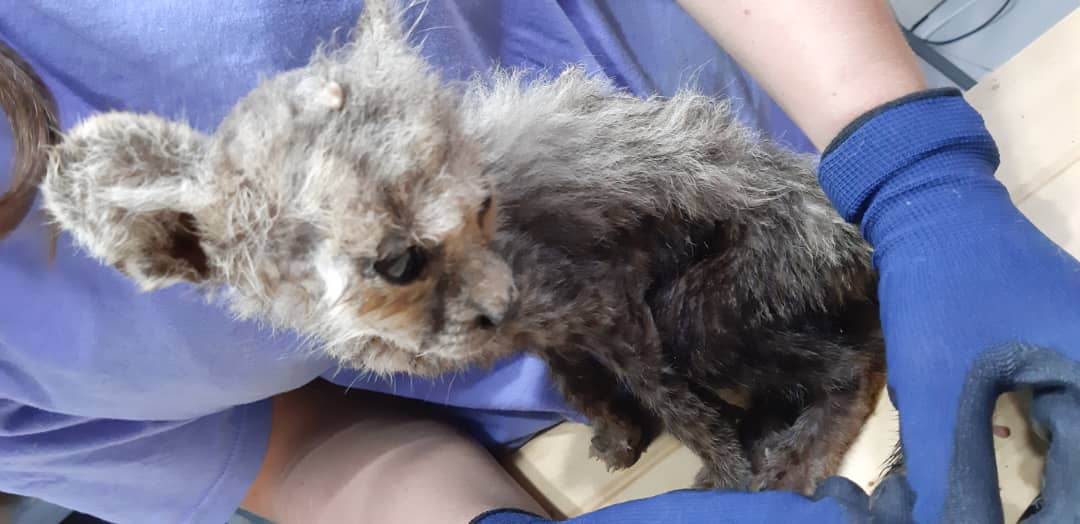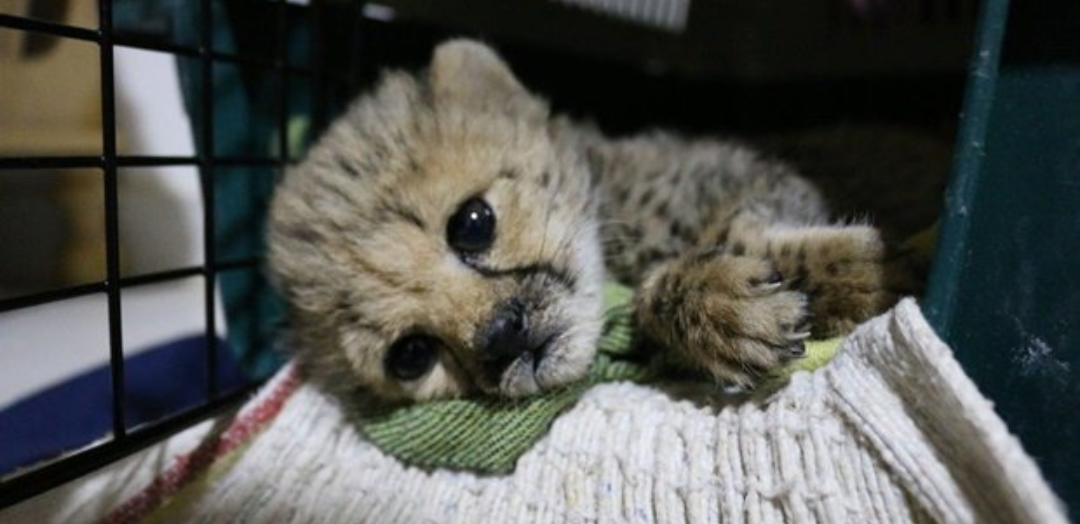The illegal wildlife trade is decimating wild populations of cheetahs in the Horn of Africa
Cheetah cubs are snatched from their mother when just a few weeks old and are abused, scared, weak, and deprived of a life in the wild. This is the reality faced by cheetah cubs in the Horn of Africa, taken from the wild to meet the demands of the illegal wildlife pet trade.
In the past few years, an estimated 300 cheetah cubs have been taken from the wild each year, to be illegally sold as pets in the Middle East. Sadly, most of the cubs do not survive the journey. They are malnourished and dehydrated and of every four cubs stolen from the wild, up to three will die in transit. Of those that do survive and make it into the illegal wildlife trade, the majority will not live for more than two years.

The illegal wildlife trade in cheetahs is driven by demand for exotic pets and most of the trade in live cheetahs occurs between the Horn of Africa and the Arabian Peninsula, where cheetahs are kept illegally as pets. Trafficked cheetahs are believed to originate in Ethiopia, northern Kenya, Somalia, and Somaliland, and most are smuggled from points along the Somaliland coast into the Arabian Peninsula through Yemen. The route is favoured by traffickers for its short distance between the two continents.
Cheetahs are very difficult to breed in captivity; therefore, cubs are taken from the wild to satisfy demand. In the Horn of Africa, the population of adult and adolescent cheetahs is estimated to be less than 500, so this take-off of up to 300 cubs per year poses a serious threat to the species, with a very real risk of local extinction.

As part of our mission to build a more compassionate world for wild cheetahs, we are working tirelessly to mitigate the threats of the illegal wildlife trade, and to give the rescued cheetahs a second chance at life. Here is how we are turning the tide for cheetahs:
- Our Cheetah Rescue and Conservation Centre (CCRC) in Somaliland is complete, built on 800 hectares of land provided by the Somaliland Government. The 92 cheetahs, 1 leopard and 1 caracal, confiscated from poachers and famers, were moved to the CCRC during the first 6 months of 2023. More cheetah cubs have been rescued since then and we now care for 96 in total. Many of these cheetahs were dehydrated, malnourished and traumatised due to the conditions they suffered from their initial capture and from nutritional deficiencies and improper care in the hands of their captors. The majority will require long term veterinary care and cannot be released back into the wild. The CCRC comprises vast outdoor camps providing the most natural environment for the animals.
- We work with and support Somaliland’s Ministry of Environment & Climate Change (MoECC) with cub rescue missions;
- We train members of the judiciary and are currently working with the MoECC to re-write their wildlife law;
- We train rural and pastoral farmers, veterinarians and rangers and are conducting outreach in communities where trafficking is known to occur;
- We are building community governance structures to better conserve the ecosystem and support the humans and wildlife that share the same landscape;
- Our researchers bank DNA samples to establish the origins of confiscated cheetahs and aid in investigations;
- We work with the NGOs and governments in the Middle East to reduce demand for illegal wildlife pets throughout the region, whilst also supporting the Horn of Africa Wildlife Enforcement Network (HAWEN) and national Illegal Wildlife Trade Task Forces.
- We survey wild cheetah populations in Somaliland where little knowledge of these populations is available.

One of our rescued cheetahs exploring their new home at our CRCC in Somaliland